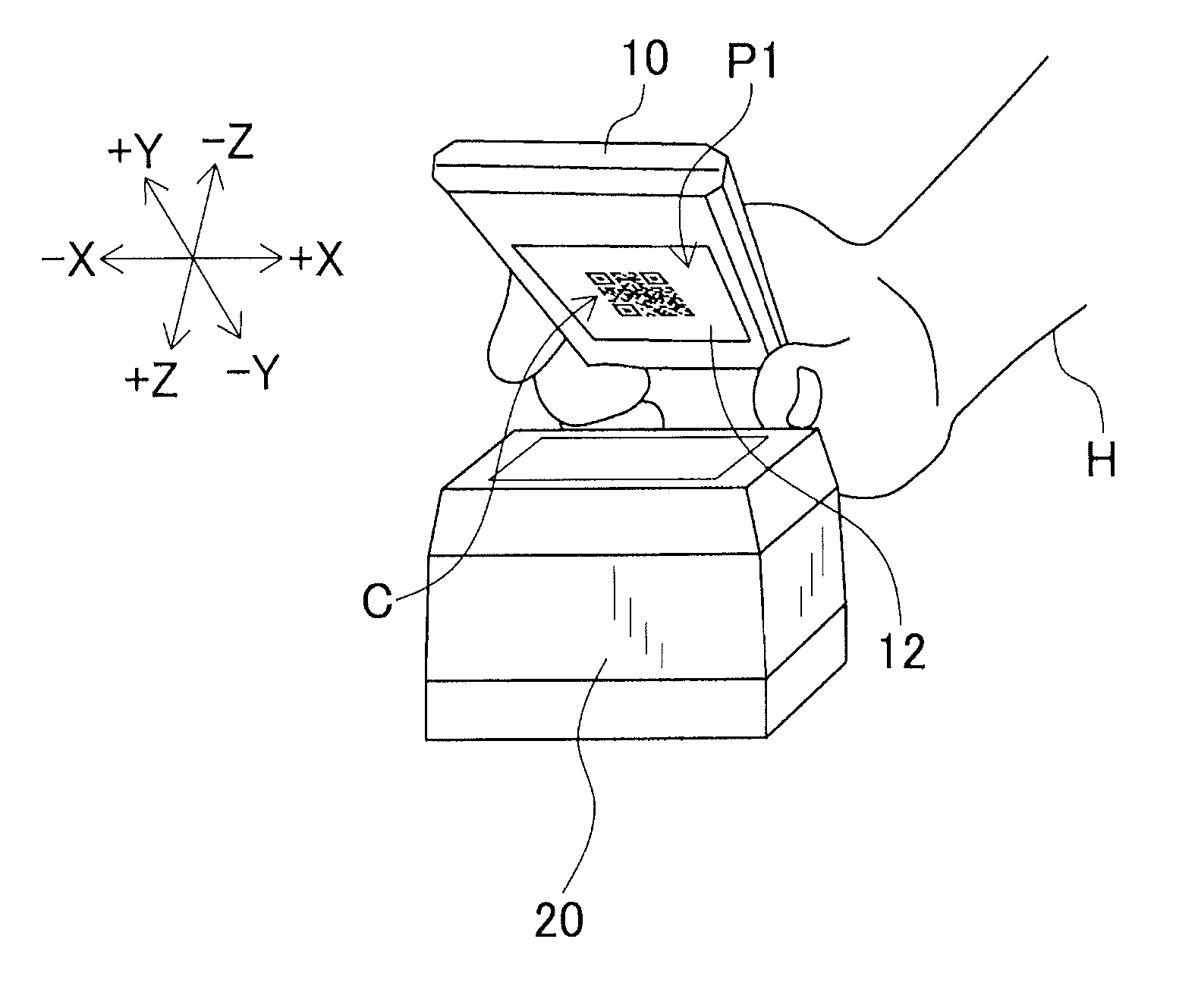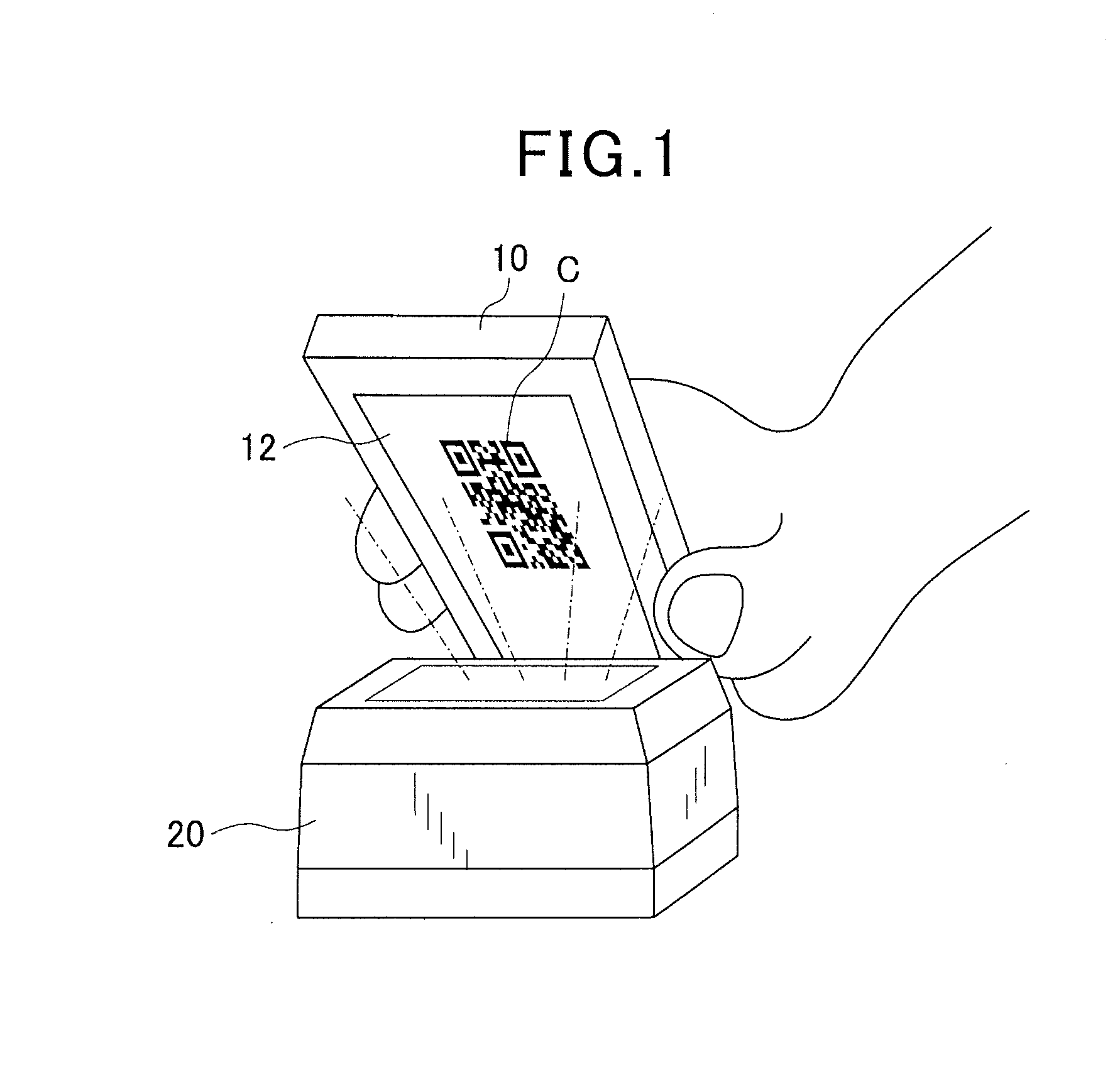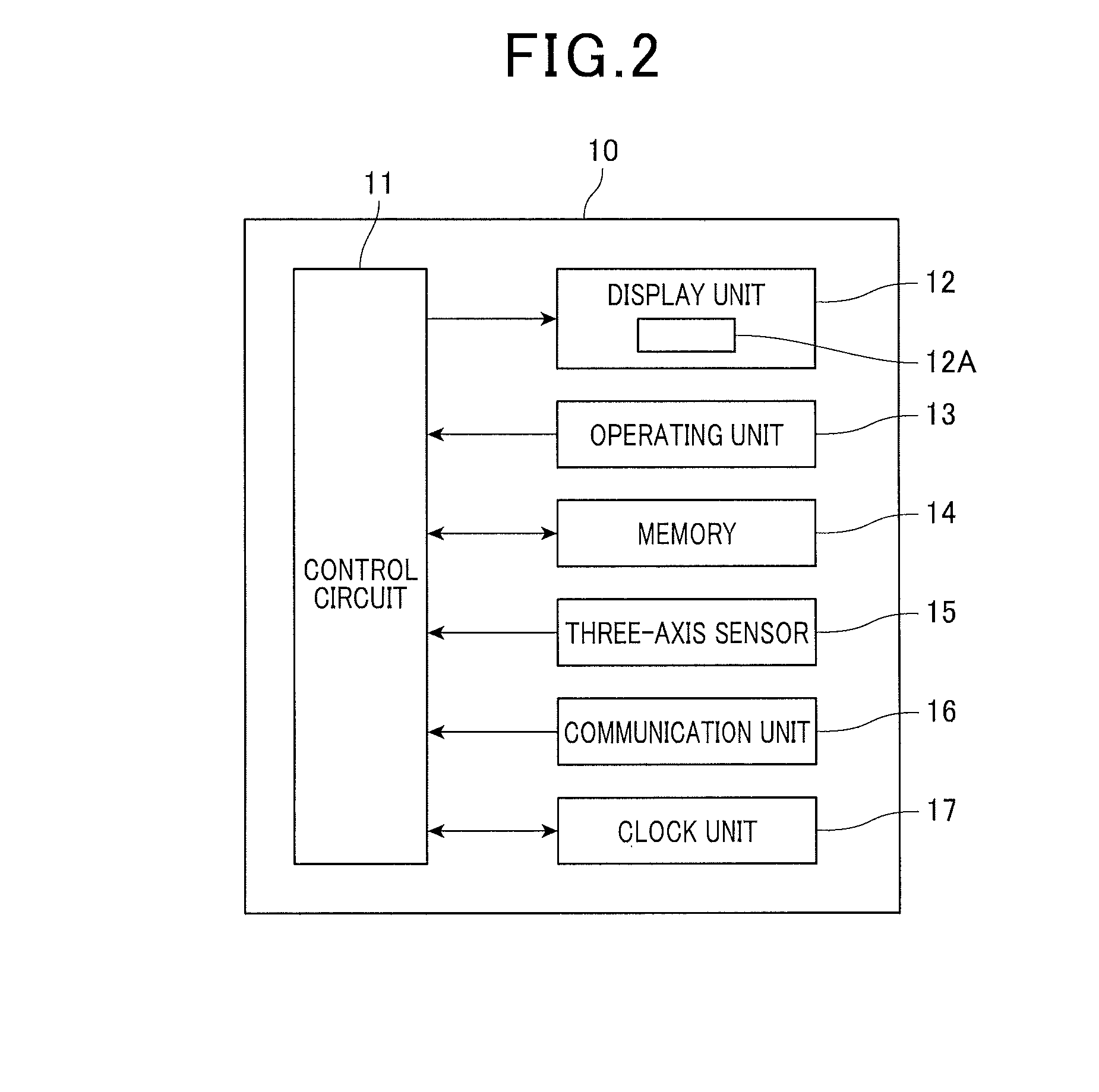Portable Information Code Display Apparatus
a display apparatus and information code technology, applied in the direction of instruments, computing, electric digital data processing, etc., can solve the problems of operator difficulty in confirming the display state of the display screen, the display screen may not be in a reading state, and the reading apparatus is not able to read information codes
- Summary
- Abstract
- Description
- Claims
- Application Information
AI Technical Summary
Benefits of technology
Problems solved by technology
Method used
Image
Examples
first embodiment
[0056]A first embodiment actualizing the present invention will hereinafter be described with reference to the drawings.
Overview of a Portable Information Code Display Apparatus
[0057]First, an overview of a portable information code display apparatus 10 will be described. The portable information code display apparatus (also referred to, hereafter, as simply a display apparatus) 10 shown in FIG. 1, FIG. 2, and the like is configured such as to be used while being gripped by a user. For example, the display apparatus 10 is configured as a portable information terminal that is carried by the user and used in various locations. The display apparatus 10 is provided with a function for generating and displaying an information code C, such as a barcode or a two-dimensional code. The display apparatus 10 is merely required to be a portable information apparatus that has a display, such as a mobile phone, a smartphone, or a wearable terminal. Functions of the display apparatus 10, other tha...
second embodiment
[0116]A second embodiment differs from the first embodiment only in that the code display process in FIG. 9 is changed as in FIG. 10. The second embodiment is similar to the first embodiment in other aspects. In the process in FIG. 10, the processes at S21 to S23 are respectively the same as the processes at S1 to S3 in FIG. 9. Therefore, detailed descriptions of these processes are omitted.
[0117]In the process in FIG. 10, the process at S24 is performed instead of the process at S4 in FIG. 9. That is, after determining that a predetermined amount of time has elapsed at S23 (that is, after the information code C has been displayed over a predetermined amount of time in the readable state as in FIG. 8), in the process at S24, the display apparatus 10 performs a process to switch the display to a display screen for an application program. The display screen displayed in the process at S24 is, for example, the display screen of the application program displayed immediately before the p...
third embodiment
[0119]Next, a third embodiment will be described. The hardware configuration of the display apparatus 10 according to the third embodiment is the same as that according to the first embodiment. Therefore, a detailed description of the hardware configuration will be omitted. According to the third embodiment, a display such as that shown in FIG. 11, for example, can be performed by any of the application programs present in the display apparatus 10.
[0120]In this configuration, the user performs a predetermined operation on the operating unit 12 and starts a predetermined application program. As a result, an image display such as that in FIG. 11 is started. When the image display is started, a plurality of images are successively displayed on the display unit 12, as shown in the left-hand drawing in FIG. 11. For example, in the example in FIG. 11, an image P1 of the information code C, an image P2 including characters indicating the name of an airline company, and an image P3 includin...
PUM
 Login to View More
Login to View More Abstract
Description
Claims
Application Information
 Login to View More
Login to View More - R&D
- Intellectual Property
- Life Sciences
- Materials
- Tech Scout
- Unparalleled Data Quality
- Higher Quality Content
- 60% Fewer Hallucinations
Browse by: Latest US Patents, China's latest patents, Technical Efficacy Thesaurus, Application Domain, Technology Topic, Popular Technical Reports.
© 2025 PatSnap. All rights reserved.Legal|Privacy policy|Modern Slavery Act Transparency Statement|Sitemap|About US| Contact US: help@patsnap.com



